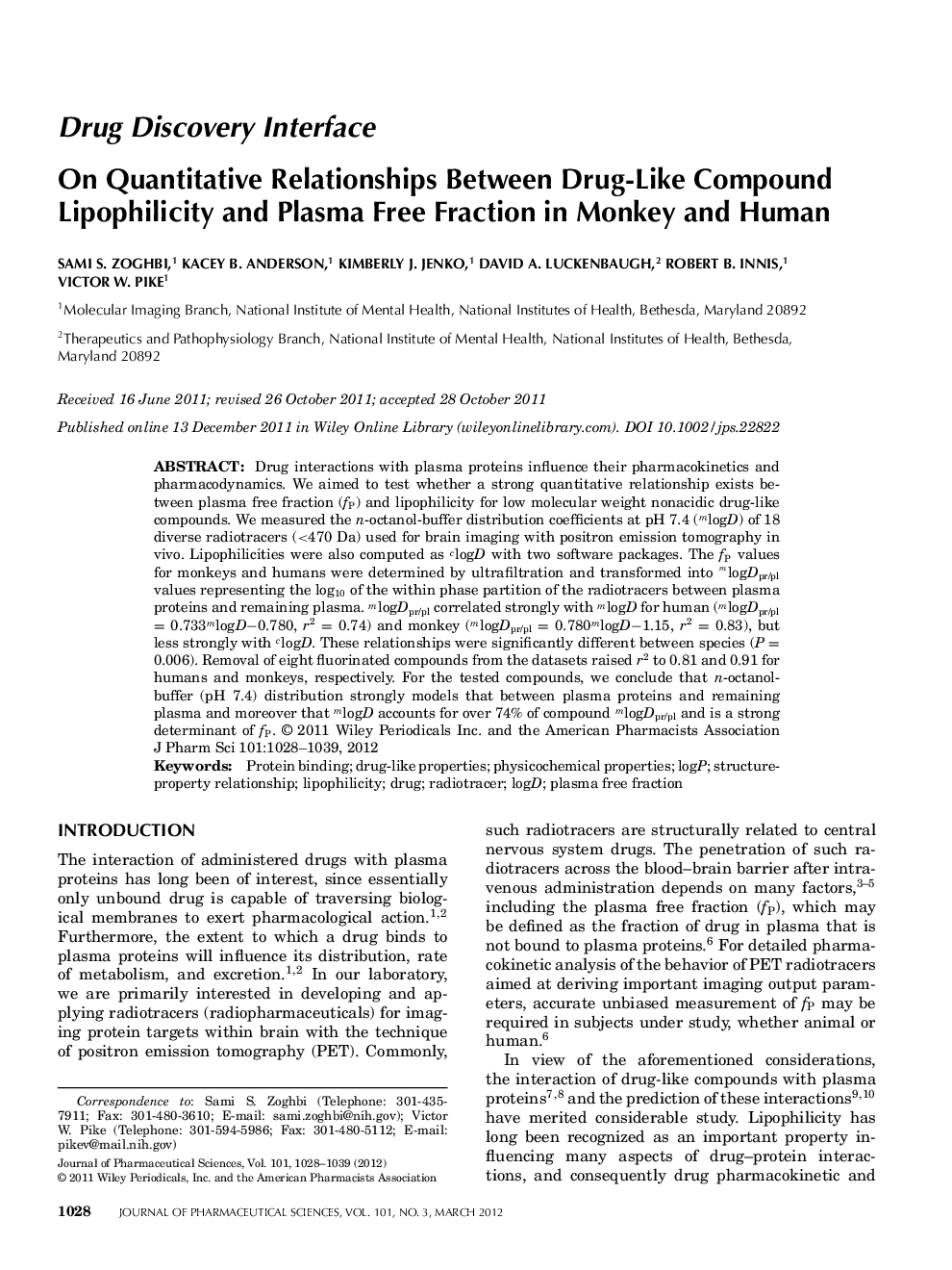| Article ID | Journal | Published Year | Pages | File Type |
|---|---|---|---|---|
| 2485992 | Journal of Pharmaceutical Sciences | 2012 | 12 Pages |
Abstract
Drug interactions with plasma proteins influence their pharmacokinetics and pharmacodynamics. We aimed to test whether a strong quantitative relationship exists between plasma free fraction (fP) and lipophilicity for low molecular weight nonacidic drug-like compounds. We measured the n-octanol-buffer distribution coefficients at pH 7.4 (mlogD) of 18 diverse radiotracers (<470Â Da) used for brain imaging with positron emission tomography in vivo. Lipophilicities were also computed as clogD with two software packages. The fP values for monkeys and humans were determined by ultrafiltration and transformed into mlogDpr/pl values representing the log10 of the within phase partition of the radiotracers between plasma proteins and remaining plasma. mlogDpr/pl correlated strongly with mlogD for human (mlogDpr/pl = 0.733mlogDâ0.780, r2 = 0.74) and monkey (mlogDpr/pl = 0.780mlogDâ1.15, r2 = 0.83), but less strongly with clogD. These relationships were significantly different between species (P = 0.006). Removal of eight fluorinated compounds from the datasets raised r2 to 0.81 and 0.91 for humans and monkeys, respectively. For the tested compounds, we conclude that n-octanol-buffer (pH 7.4) distribution strongly models that between plasma proteins and remaining plasma and moreover that mlogD accounts for over 74% of compound mlogDpr/pl and is a strong determinant of fP.
Keywords
Related Topics
Health Sciences
Pharmacology, Toxicology and Pharmaceutical Science
Drug Discovery
Authors
Sami S. Zoghbi, Kacey B. Anderson, Kimberly J. Jenko, David A. Luckenbaugh, Robert B. Innis, Victor W. Pike,
